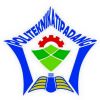PENGARUH PROSES PENGERINGAN TERHADAP NILAI PLASTISITAS RETENSI KARET REMAH
Abstract
The crumb rubber SIR 20 originating from the processing of natural rubber (Hevea brasiliensis) plays a crucial role as a primary export commodity in the Indonesian economy. Due to its diverse applications in consumer products and medical devices, natural rubber possesses unique properties such as resilience, elasticity, and wear resistance. The drying process of natural rubber at high temperatures significantly affects its plasticity and strength. This research explores the influence of temperature (130-155°C) and drying time (77-110 minutes) on the plasticity of crumb rubber SIR 20. The results indicate that the PRI (Plasticity Retention Index) values still meet quality standards within certain ranges. The optimal PRI value of 75-76% is obtained at a temperature of 130-135°C for 77 minutes. Increasing the operating temperature and drying time leads to a significant decrease in PRI values due to thermal oxidation occurring in the molecular structure of rubber, thereby affecting the quality of crumb rubber. The findings from this study on the impact of temperature and drying time can provide technical information for the rubber industry to maintain product quality while minimizing environmental impact.
Keywords
Full Text:
PDFReferences
Aguele, Felix Osarumhense, Justice Agbonayinma Idiaghe, and Tochukwu Uzoma Apugo-Nwosu. 2015. “A Study of Quality Improvement of Natural Rubber Products by Drying Methods.” Journal of Materials Science and Chemical Engineering 03 (11): 7–12. https://doi.org/10.4236/msce.2015.311002.
Badan Standardisasi Nasional (BSN). 2011. SNI 1903:2011 Karet spesifikasi teknis, issued 2011.
Bonfils, Frederic, J.C. Laigneau, H. de Livonniere, J. Sainte Beuve, and Montpellier. 1999. “Study of Natural Rubber Degradation in a PRI Oven.” Kautschuk Und Gummi Kunstoffe 52 (February).
Chou, S.K., and K.J. Chua. 2001. “New Hybrid Drying Technologies for Heat Sensitive Foodstuffs.” Trends in Food Science & Technology 12 (10): 359–69. https://doi.org/10.1016/S0924-2244(01)00102-9.
Ediati, Rifah, and Jajang. 2010. “Mathematical Model of Smoking Time Temperature Effect on Ribbed Smoked Sheets Quality.” World Academy of Science, Engineering and Technology 62 (February): 759–63.
Hendratno, Sinung, Sekar Woelan, and Mohamad Irfan Fathurrohman. 2015. “Analisis Kelayakan Finansial Model Peremajaan Karet Partisipatif: Sumber Pembiayaan Dari Hasil Penjualan Kayu Karet.” Warta Perkaretan 34 (1): 55. https://doi.org/10.22302/ppk.wp.v34i1.63.
Khongchana, P., S. Tirawanichakul, Y. Tirawanichakul, and S. Woravutthikhunchai. 2007. “Effect of Drying Strategies on Quality of STR 20 Block Rubbers.” Journal of Agricultural Technology 3 (2): 157–71.
Kumar, Chandan, M.A. Karim, and Mohammad U.H. Joardder. 2014. “Intermittent Drying of Food Products: A Critical Review.” Journal of Food Engineering 121 (January): 48–57. https://doi.org/10.1016/j.jfoodeng.2013.08.014.
Morgans, R, S. Lackovic, B. McGarry, G Dinnage, and B. Pearce. 1999. “Importance of Experimental Parameters on Rapid Plasticity Testing for PRI (Plasticity Retention Index).” Proc. Int. Rubber Conference, no. 12.
Ng Mei Xiang. 2019. “High-Temperature Intermittent Drying: Quality Characterization of Crumb Rubber.” University of Nottingham.
Ngolemasango, F, E Ehabe, C Aymard, J Sainte‐Beuve, B Nkouonkam, and F Bonfils. 2003. “Role of Short Polyisoprene Chains in Storage Hardening of Natural Rubber.” Polymer International 52 (8): 1365–69. https://doi.org/10.1002/pi.1225.
Pertanian, Departemen. 2007. “Prospek Dan Arah Pengembangan Agribisnis Karet.” Jakarta: Badan Penelitian Dan Pengembangan Pertanian.
Purwanta, Jamhari Hadi. 2008. Teknologi Budidaya Karet. Balai Besar Pengkajian dan Pengembangan Teknologi Pertanian, Badan Litbang Pertanian.
Sambhi, M.S. 1989. “An Analysis of the Plasticity Retention Index of the Standard Malaysian Rubber Scheme.” Journal of Natural Rubber Research 4 (2): 133–40.
Simanjuntak, Agus Wiranto, Herry Darmadi, Abdul Azis Rahmansyah, Novia Nelza, and Bukhari. 2023. “Analisa Pengaruh Temperatur Terhadap Laju Pengeringan Crumb Rubber Pada Dryer Menggunakan Energi Panas Pembakaran Pada Burner.” Jurnal Mekanova: Mekanikal, Inovasi Dan Teknologi 9 (1).
Siregar, Irma Juliyanty. 2008. “Pengaruh Suhu Pemanasan Terhadap Plastisitas Karet Sir 20 Di PT. Bridgestone Sumatra Rubber Estate Dolok Merangir.” Medan.
Tham, Thing Chai. 2018. “Improving Drying Efficiency and Energy Saving for Crumb Natural Rubber Drying with Combined Drying Technologies.” Chemical technology, University of Nottingham, Malaysia.
Tham, Thing Chai, Ching Lik Hii, Sze Pheng Ong, Nyuk Ling Chin, Luqman Chuah Abdullah, and Chung Lim Law. 2014. “Technical Review on Crumb Rubber Drying Process and the Potential of Advanced Drying Technique.” Agriculture and Agricultural Science Procedia 2: 26–32. https://doi.org/10.1016/j.aaspro.2014.11.005.
Vachlepi, Afrizal, and Didin Suwardin. 2014. “Pengeringan Karet Remah Berbasis Sumber Energi Biomassa.” Warta Perkaretan 33 (2): 103. https://doi.org/10.22302/ppk.wp.v33i2.55.
Zhong, Jie-ping, Chengpeng Li, Sidong Li, Lingxue Kong, Lei Yang, Shuang Quan Liao, and Xiaodong She. 2009. “Study on the Properties of Natural Rubber during Maturation.” Journal of Polymer Materials 26: 351–60. https://api.semanticscholar.org/CorpusID:136643066.
Refbacks
- There are currently no refbacks.






_-_Copy1.png)
